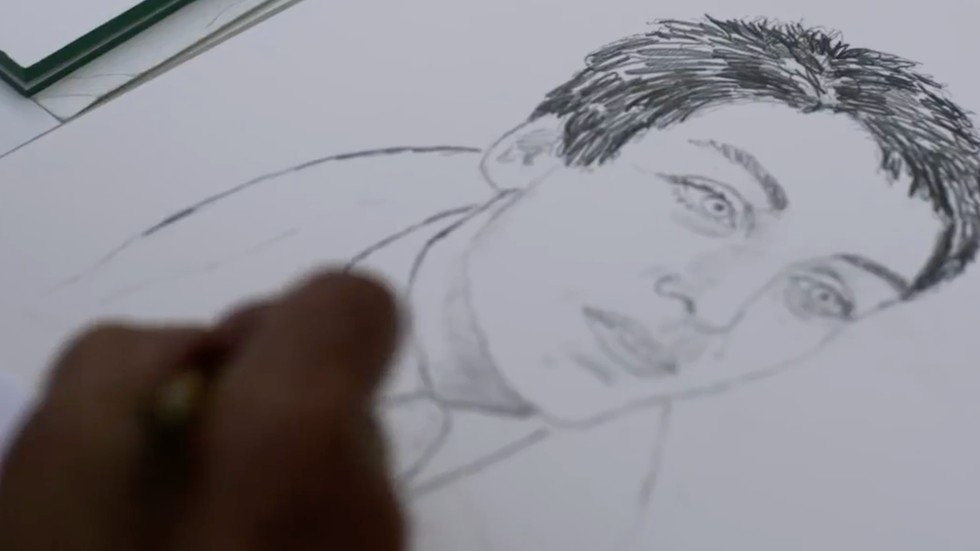"Jennifer Fairgate" Died Mysteriously In an Oslo Hotel Room
To this day, nothing is known about her identity.


Plot details for Unsolved Mysteries ahead. Content warning: gun violence, brief reference to suicide. One of the most confounding episodes of Unsolved Mysteries' volume two focuses on an unidentified woman who might have been a sex worker, a criminal, a spy—or something else entirely. Despite extensive research and investigation, very little is known about the unknown woman, who called herself "Jennifer Fairgate" or "Jennifer Fergate"—it's difficult to make a determination from her signature—other than the fact that she used that name to checked into room 2805 of an upmarket Norwegian hotel, Oslo Plaza Hotel, and was found dead after three days. (You can see a clip here.)
Who was "Jennifer Fairgate"?
On May 31, 1995, a young woman, dressed in black and with a short, stylish haircut, checked into the Oslo Plaza Hotel. Despite it being a premier luxury hotel in the city, she didn't provide a credit card or any form of identification, only signing in under the name "Jennifer Fairgate" (believed by some to be "Fergate"). A hotel employee said there was a man with her, and indeed a "Lois Fairgate" was scheduled to be staying with her—but he disappeared after check-in.
Three days later, security came to get a credit card from her. The room had had a "Do Not Disturb" sign outside for two days. After the knock, the man heard a gunshot. He ran to get assistance. The room was left unattended for 15 minutes.
What happened to "Jennifer Fairgate"?
When police arrived at the scene, the woman was in bed with a fatal gunshot wound to the head. She was holding the gun in an odd position, and there was no gunpowder residue on her hand. There were more bullets in her luggage—unusual for someone who is aiming to die by suicide, the episode noted—and the room was double-locked on the inside, but an intruder would have had a few minutes to be able to leave the room, if such a person existed. Then again, there were no signs of a struggle.

A sketch of "Jennifer Fairgate.
An investigation of the woman's luggage made the case more confusing. She had no identification on her: no passport, no license, no keys, no cosmetics, no toiletries except for a men's perfume, very little by way of clothing. All the tags on her clothes had been removed, much like in the case of the Somerton Man (1948), found mysteriously on a beach in Australia without identifiers of any kind.
Jennifer Fairgate was not her real name. She'd provided an address that did not exist and a fake profession. There were not many entrances to the room using her keycard, and none before her death (although that doesn't necessarily cover entrances without a keycard or exits). She apparently spent significant time outside the room and called Belgian numbers from the room while she was there. Investigators searched, fruitlessly, for her family. She was determined to be in her early 20s, but the trail ran cold and nothing more was learned about her.
What didn't the episode cover?
Interestingly, "Jennifer" is not the only person who died under mysterious circumstances in Norway, and whose background was traced to Belgium. The "Kambo" man, who was found in 1987 near train tracks in South Norway, was also found without identification on him and with the tags cut out of his clothes. Like "Jennifer," DNA testing revealed the connection to Belgium.
Get exclusive access to fashion and beauty trends, hot-off-the-press celebrity news, and more.
Furthermore, the now-infamous "Isdal" woman, found partially burned alive with poison in her stomach, was found in a remote part of Norway called Ice Valley and was similarly shown to have originated from or around Belgium. There were encrypted notes and disguises found in the woman's belongings, and the tags were cut out of her clothes. It was speculated at the time that she might have been a spy—and the similarities with "Jennifer" are eerily similar.
If you have information about this woman, alias "Jennifer Fairgate," visit unsolved.com.

Katherine’s a contributing syndications editor at Marie Claire who covers fashion, culture, and lifestyle. In her role, she writes stories that are syndicated by MSN and other outlets. She’s been a full-time freelancer for over a decade and has had roles with Cosmopolitan (where she covered lifestyle, culture, and fashion SEO content) and Bustle (where she was their movies and culture writer). She has bylines in New York Times, Parents, InStyle, Refinery29, and elsewhere. Her work has also been syndicated by ELLE, Harper’s Bazaar, Seventeen, Good Housekeeping, and Women’s Health, among others. In addition to her stories reaching millions of readers, content she's written and edited has qualified for a Bell Ringer Award and received a Communicator Award.
Katherine has a BA in English and art history from the University of Notre Dame and an MA in art business from the Sotheby's Institute of Art (with a focus on marketing/communications). She covers a wide breadth of topics: she's written about how to find the very best petite jeans, how sustainable travel has found its footing on Instagram, and what it's like to be a professional advice-giver in the modern world. Her personal essays have run the gamut from learning to dress as a queer woman to navigating food allergies as a mom. She also has deep knowledge of SEO/EATT, affiliate revenue, commerce, and social media; she regularly edits the work of other writers. She speaks at writing-related events and podcasts about freelancing and journalism, mentors students and other new writers, and consults on coursework. Currently, Katherine lives in Boston with her husband and two kids, and you can follow her on Instagram. If you're wondering about her last name, it’s “I go to dinner,” not “Her huge ego,” but she responds to both.